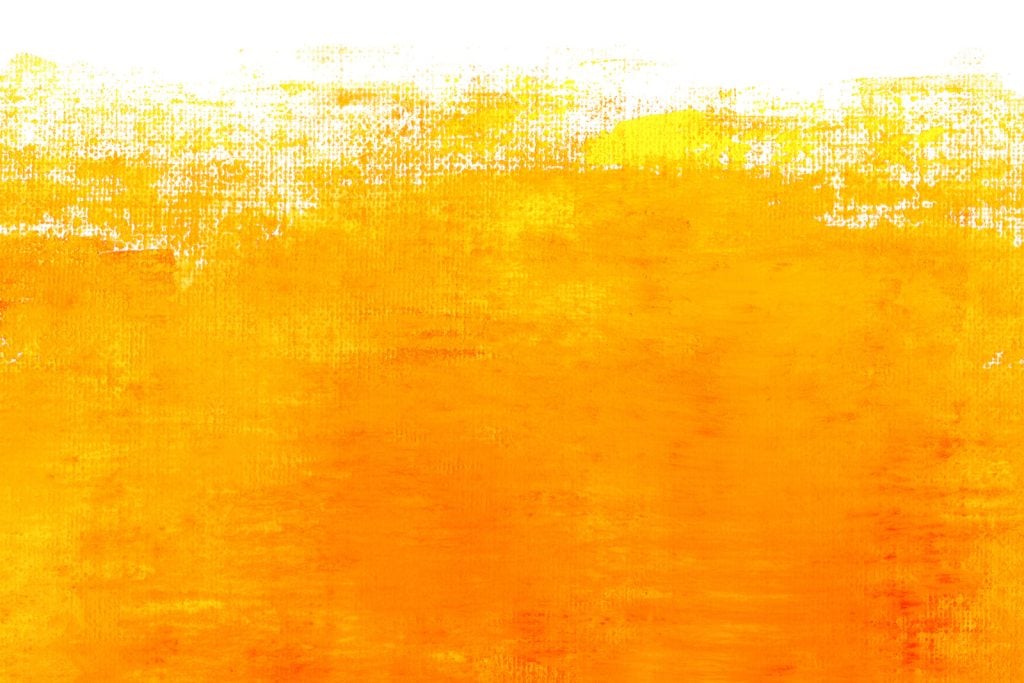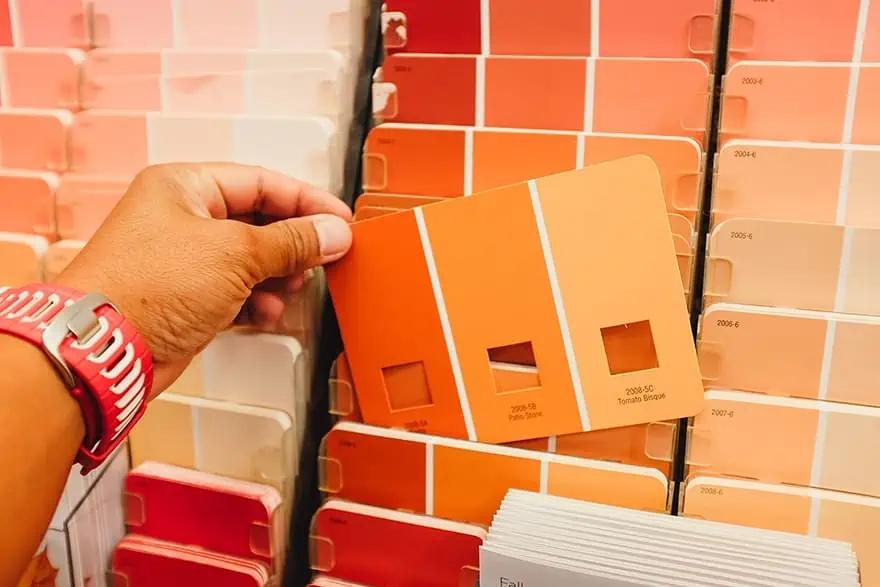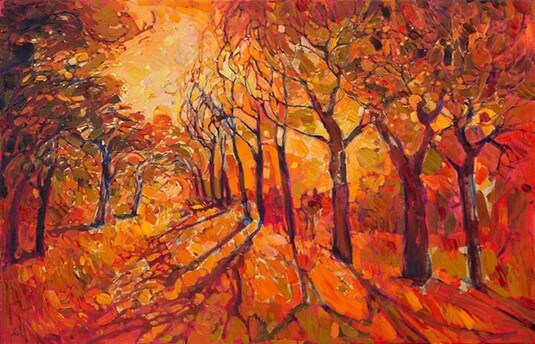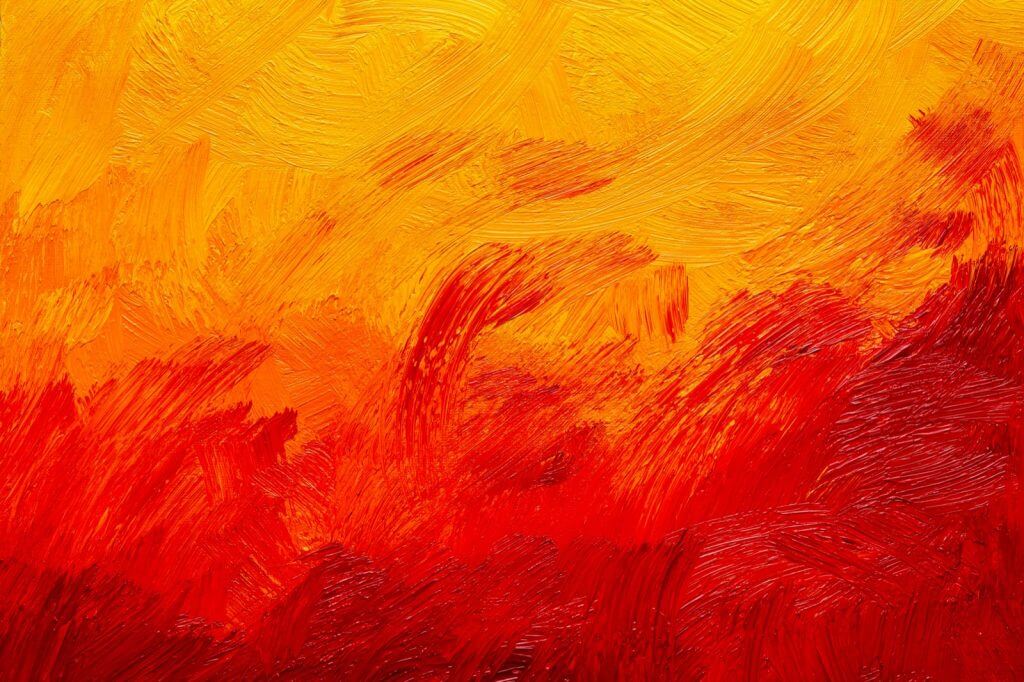Orange is a color used by several painters, and this color must be in the color palette of every painter.
It is a color loved by many and can be produced very quickly, so everyone can use it as per their preferences.
But the question remains constant for every beginner: how do you make the color orange? Well, we will be covering all of it.
If you love orange and cannot end your paintings without this color, then make sure you are here till the end.
Even if you do not like this color to be used more often, you can still stay, and you will surely fall in love with orange.
Meaning of the Color Orange

Orange signifies power and strength and is associated with immense joy, happiness, warmth, sunshine, success, and creativity.
Orange is the color of the sun, which signifies power and strength.
This color is also associated with autumn, as the leaves are orange.
This beautiful color is trendy on Halloween, as the pumpkin is orange.
The citrus fruit that helps our skin glow is orange and in the orange shade.
The color has so many meanings, and its authentic way of making the color is lovely and elegant.
There are so many things around us that are orange, and we receive a kind of positivity from the color.
It is the sole reason painters and artists have a soft corner for color.
What Colors Make Orange?

Orange being a secondary color, you must mix two primary colors to produce orange.
The primary colors that you should use are red and yellow. If you wish to mix a vivid orange (bright orange), you shall use yellow and red, which should not have blue traces.
When you mix three different primary colors, you get a tertiary color, and in this case, we are only looking for the secondary color.
So, you should avoid mixing three colors whenever you wish to produce orange.
There are many ways to produce different shades of orange by mixing red and yellow colors.
We will be discussing all the possible ways to create this beauty in different shades that every type of individual can love.
By now, you will have gotten your answer to what colors make orange.
How to Make the Color Orange

You would need some materials to practice mixing different reds and yellows to make different orange shades.
The mixing becomes easy when you are ready with your material.
- A palette to mix and test all the colors.
- A brush or a palette knife (whichever is suitable for you).
- All the yellows that you have at your place.
- All the reds that you have at your place.
Follow these steps to
- Step 1: Predict the possible outcome you would get by mixing all the shades and different colors and try to note it down in a notepad to analyze your assumptions later. You can predict which red and yellow will create an intense or dull orange and see if your prediction is correct.
- Step 2: Pick all the red and yellow shades and arrange them in your palette. We will use the yellows cadmium yellow, yellow Ochre, and cadmium lemon. The red we will be using is cadmium red, alizarin crimson, and burnt sienna.
- Step 3: Test all the colors with a giant canvas or a palette.
Orange in Color Theory: A Deeper Dive Into Hue, Saturation, and Value
While we’ve discussed how orange is made by mixing red and yellow, let’s dive deeper.
Understanding color theory can elevate your art.
- Hue: This is simply the color itself. When we say “orange,” we’re talking about the hue. But did you know oranges have a wide range? From a fiery vermilion to a soft peach, changing the balance of red and yellow alters the hue.
- Saturation: Think of this as the intensity of the color. A highly saturated orange is vivid and bright, while a less saturated orange appears more subdued and greyish. This is key when you want your orange to stand out or blend in subtly.
- Value: This refers to how light or dark the orange is. Adding a touch of white can give you a lighter, more pastel orange, while a bit of black can create a deeper, richer shade. It’s all about the mood you want to convey.
Now, let’s apply this to our color mixing:
- When mixing red and yellow, start thinking about the hue you want. A brighter red will give you a more vibrant orange, while a darker red will lean towards a rustier hue.
- Play with saturation by adjusting the amount of each color. Red or yellow can intensify the orange, while adding a bit of its complementary color (blue) can tone it down.
- Experiment with value by adding white or black in small amounts. Notice how it changes the feel of the orange.
Remember, color mixing is an art in itself. There’s no right or wrong here. It’s all about what you feel works for your painting.
So mix those colors and see the myriad shades of orange you can create!
Utilizing Yellows to Create Orange Shades

As you can see in the picture, three different yellow shades with cadmium red produce several shades of orange.
Cadmium Yellow mixed with Cadmium red gives a lovely, intense orange shade that is not too light or dark.
This color is in every painter’s palette as it gives that natural shade that can be used in every painting.
Yellow Ochre mixed with cadmium red creates another beautiful shade of muted orange that can be used in many artistic works.
When mixed with cadmium red, Cadmium lemon gives a much brighter orange shade than the muted orange.
All the shades produced using different yellows look amazing in their places and are loved by every art person.
Utilizing Reds to Create Orange Shades

It is time to add some different reds to cadmium yellow. The steps remain the same, but now we will test different shades of red.
Cadmium yellow mixed with Alizarin crimson, a shade of red, gives a rich orange that is unlike the previous orange shades.
They were relatively brighter than the robust orange we created now. Alizarin crimson is a lot cooler shade than the cadmium reds, and the result is also excellent in temperature.
Next, we will be mixing cadmium yellow with some burnt sienna, and the color we get is a muted orange.
Burnt sienna is an earthy-toned color; whenever yellow is mixed with it, it will always give a muted orange.
What Colors Make Muted Shades of Orange?

We have finally created different shades and kinds of orange, and now we will mix some blues in our cadmium orange to get that muted shade of orange.
Blue is a gorgeous color, and mixing it will be fun for all of us.
Let us begin mixing some cadmium orange with ultramarine blue, and you will see a cooler shade of muted orange.
Cobalt blue mixed with cadmium orange; you will see a warmer shade of orange.
Cadmium orange with RGH blue gives a much deeper orange shade, which slightly gives a greener effect, as we can witness that every muted orange sometimes gives a warmer and cooler shade.
Ultimately, we created a greenish shade of orange that can be utilized in several artistic palettes.
Utilizing Orange in a Painting

In the above painting, you can see the various orange color shades used authentically and beautifully.
The unique painting signifies the blend of so many colors associated with orange.
Real art is made by mixing shades of orange with reds and yellows.
Your art should speak for itself when you create it. The blend of reddish-orange, warm orange, brownish-orange, and greenish-orange magnifies the color’s beauty.
Be creative while using all the shades of oranges in your art, and let your art speak for you.
If you could not mix so many shades to get that perfect blend of orange color for your painting, your art would end up looking dull.
Try mixing your colors and try different shades, and imagine yourself as the viewer of the painting.
When you already have the knowledge and have practiced mixing several colors, it is time to utilize your knowledge to invent a unique shade of orange.
This will help you grow as an artist, and you will learn new methods and techniques to mix and bring up a new shade of orange.
The color you choose can make any art beautiful and authentic at first sight of the painting.
You can add your creativity and knowledge to enhance the beauty of the painting.
Final Thoughts
In conclusion, the world of orange is much more than just mixing red and yellow. By understanding hue, saturation, and value, we unlock various possibilities, each shade carrying its unique story and emotion.
Understanding these color theory principles is key, whether you’re aiming for a bold, fiery orange to capture attention or a soft, muted tone for a subtle touch.
Remember, the journey of color mixing is as much about experimentation as the final result.
Each brushstroke is a learning experience, a step closer to creating the perfect orange for your canvas.
So, embrace the process, experiment with combinations, and have the perfect mix of orange colors in no time.

